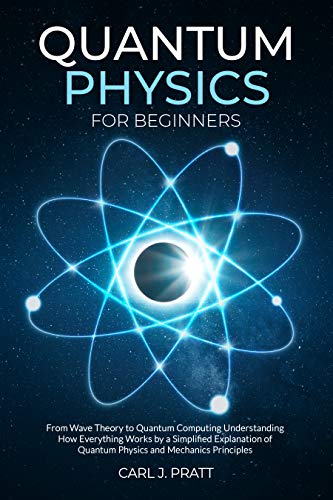Quantum Field Theory (QFT) stands as a formidable edifice in the realm of theoretical physics, presenting both tantalizing insights and daunting complexities. At its heart, QFT melds classical field theory, special relativity, and quantum mechanics into a coherent framework that describes the fundamental interactions of nature. However, as one ventures into this labyrinthine discipline, the question arises: which literary artifact stands as the most difficult to decipher among the tomes dedicated to this esoteric subject?
To address this inquiry, one must traverse the intricate landscape of quantum mechanics and field theory, identifying works that not only challenge the reader’s intellectual faculties but also offer unparalleled profundity. Among the pantheon of QFT literature, two texts often emerge as contenders for the title of the most difficult: “An Introduction to Quantum Field Theory” by Michael Peskin and Daniel Schroeder, and “Quantum Field Theory” by Franz Mandl and Graham Shaw. Yet, if one seeks the apex of complexity, it is Alexander Ovchinnikov’s “Quantum Field Theory: A Modern Primer” that arguably takes the crown.
Ovchinnikov’s tome is akin to venturing into the depths of an arid desert; while barren at first glance, it conceals a wealth of treasures for those who dare endure its challenges. Written with an advanced audience in mind, the text presumes a solid foundation in quantum mechanics and special relativity. It launches directly into the intricacies of path integrals, Feynman diagrams, and renormalization, leveling a formidable barrier to entry. The reader is swept into a tempest of mathematical rigor, wherein concepts like gauge invariance and spontaneous symmetry breaking unfurl like tendrils of a complex organism.
Transitioning to the structure of the text, one cannot overlook the unique appeal that Ovchinnikov manages to encapsulate within its pages. The abstract concepts within QFT are analogous to a painter hovering over a blank canvas, yearning to conjure a vibrant tableau. Each chapter serves as a brushstroke, adding layers and depth to the overarching narrative. The interweaving of theory and problem sets enables students not merely to absorb but to engage interactively with the material. This pedagogical approach breathes life into the dry bones of theoretical constructs, creating a symbiotic relationship between the reader and the text.
A pivotal chapter in Ovchinnikov’s work is dedicated to the phenomena of quantum vacuum fluctuations, which can be likened to hidden currents beneath a placid lake’s surface. This concept elucidates the idea that even in the absence of particles, the vacuum is teeming with energy. Readers wrestle with the implications of this notion, grappling with both its profound philosophical ramifications and the mathematical frameworks that underpin it.
Juxtaposed against Ovchinnikov’s rigorous treatment, the aforementioned “An Introduction to Quantum Field Theory” by Peskin and Schroeder serves as a more accessible alternative. While still demanding, it provides a gradual introduction to the essential concepts, akin to a gentle ascent up a mountain rather than the sheer cliffs presented by Ovchinnikov. However, as one peeks beyond the veil of introductory texts, the revelations of QFT grow ever more opaque.
For instance, the renormalization group—a concept that captures how physical theories evolve with changes in scale—invites students to engage with its multifaceted nature. Within the folds of Ovchinnikov’s exposition, the intricacies of this phenomenon are elegantly linked with critical phenomena in statistical mechanics. Such connections, while illuminating, also demand an adeptness that can challenge even seasoned physicists.
Moreover, the mathematical apparatus central to QFT—specifically, the usage of complex analytical techniques and algebraic structures, such as the S-matrix and symmetry operations—positions Ovchinnikov’s book a step ahead in terms of difficulty. The S-matrix, a tool for relating the initial and final states of a quantum system, is demystified through clever analogies and meticulously crafted diagrams, yet it necessitates a formidable grasp of not only advanced calculus but also abstract algebra.
Observably, a crucial aspect of engaging with such difficult material is perseverance. Students often find themselves at a crossroads, staring into the abyss of challenging concepts. Herein lies a metaphorical mirror; the struggle to understand QFT can serve as a reflection of one’s intellectual journey. The resilience developed in grappling with dense material mirrors the very characteristics of the quantum world itself—complexity, uncertainty, and the beauty of fundamental laws. The challenges posed by Ovchinnikov’s work may deter some, yet for those who persist, the rewards are boundless.
In summary, for those who venture into the realm of Quantum Field Theory, the journey is one of both tumult and reward. While various texts, such as “An Introduction to Quantum Field Theory” and “Quantum Field Theory” by Mandl and Shaw, provide worthy insights, Ovchinnikov’s “Quantum Field Theory: A Modern Primer” stands as a towering monolith of intellectual challenge. The difficulties presented within its pages compel readers to confront their limitations, ultimately fostering growth and understanding of the quantum landscape. Thus, the quest through this challenging terrain not only enriches knowledge of the universe but also shapes the physicists of tomorrow.












